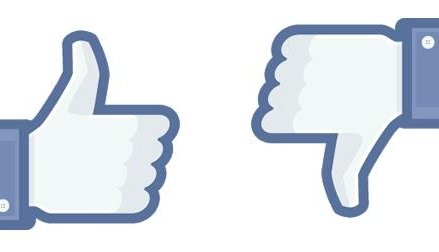
Ten signs you're using LinkedIn like Facebook (and how to stop!)
Or the original working title "What p*sses me off about the way some people use LinkedIn"
LinkedIn is fast becoming a fantastic business development, networking, educational and profile raising platform. At the most recent count, over 17m UK business professionals have a profile on the site. That is pretty much the entire professional population of the country.
I head here first thing for my business news, to check up on contacts' news and and to see how I can help fellow group members.
But during my extended use over recent months, I've noticed a few things.
And I can't bite my tongue any longer.
Caveat: I'm not selling LinkedIn training and am not operating in the personal development field. My sole motivations are for people to get the most they can from the platform, to not look like they've just come from Facebook and to make my day a little easier.
Ten signs you're using LinkedIn like Facebook
1. A profile picture that won't get you hired. The career and reputation defining image which is built around your most important and most memorable brand asset (your face). If the image you are using is either a grainy selfie, a holiday shot, a photo from a drunken night out or something from a CoverShots shoot.
Do yourself a favour and click the "People you may know" button and pick something you like that has a little more respectability to it. The same applies for avatars and pictures with someone else other than you in them.
2. A professional headline that is anything but. Chief fixer? Director of customer love? Marketing extraordinaire? Social media guru? You are probably none of these things. Think about how it looks and how people search on Linkedin.
Use a description that is both accurate and related to either the benefit you provide or your title within your company. Either way, this is guaranteed to return your profile in some searches.
3. Shameless friend collecting. One of the biggest crimes on LinkedIn. You use one-click connect which sends generic messages rather than connecting through a person's profile and personalising the message.
It's a bad first impression. Give people a reason to connect with you and start off on the right foot.
4. Not even really wanting to be friends. What do you do with all those connections? Do you actively keep in touch? What do you do when you get a message from a contact about business? Do you tut, sigh and ignore them? Fly into a rant about people contacting you on LinkedIn to talk business opportunities?
5. Going all "selly sell" right off the bat. Do you send spam messages? The LinkedIn inbox delivers into your recipient's inbox. It might be a warmer and softer way to get noticed but there is no relationship. Better to create rapport by asking questions, sharing content, joining the same group and showing your expertise and counselling side there.
6. Joining groups and not getting involved. I think most groups contain 99% lurkers, 1% contributors. Despite best efforts, many are link bait dumping grounds. If you join groups and then don't contribute, you're partially responsible for the failure of the group. Quickest remedy is to set your group digest emails to once weekly and comment on a few discussions once a week when your email lands.
7. Liking and commenting on absolutely everything. The reverse of not getting involved at all is also true. Liking and commenting on everything works well on Facebook and gives your friends a vanity boost but on LinkedIn less so. Think of it as being at that networking event and you're the loud self absorbed guy no-one wants to talk to. Not quite so appealing?
8. Sending tweets directly into LinkedIn. The automatic #in from Twitter was removed several years ago but it doesn't stop the socially savvy copying and pasting or using a third party like Hootsuite to update multiple platforms at the same time. I do this but do try to tailor the messages to not include @ and #. Are your tweets even relevant to your LinkedIn audience? You'll see they might jar after a while.
9. Asking people you barely know for endorsements and testimonials. It's a bit like asking your Facebook page to be liked but actually more vulgar because they haven't presumably sampled your expertise yet.
10. Insharing Richard Branson's (and other influencer) updates. OK, it's not Richard's fault, but my point is, I often get to see what Richard and many others have to see a hundred times in my feed thanks to this piece of functionality. It's got to Facebook like proportions.
When hundreds of people do the obvious, have the bottle to stay true to yourself and go your own way.
What other Facebook-esque crimes do you see on LinkedIn? Add them below in the comments so we can all improve how we use LinkedIn.
Communications specialist
6yI think this one is relevant to both Facebook and Twitter: posting a stream of pictures from a conference/workshop with a brief comment. One (two at most) is acceptable for but this sort of posting, in my opinion, is wearisome on LI, gives too much exposure at once to the author/subject and is better suited to these other platforms.
PERCIN-IT Consultancy 💻 | thelvadguy.nl (Mijn motivatiestuk)
7yTotally agree!
Medical Affairs | Rheumatology | Immunology | Cardiology | Respiratory | Diabetes | Nephrology | Relationship builder | Avid Mountainbiker
7yClickbaits are also spammed across LinkedIn: ,,10 things you didn't know about (finish the sentence)"